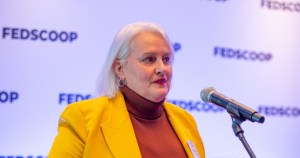Army launches its own ‘outpost’ of the Defense Digital Service

Building on the Defense Digital Service model of bringing in technologists and “bureaucracy hackers” to solve the department’s problems, the Army launched its own Digital Service team Friday.
“There’s so much potential in this model, in an area where we have so much to do,” Army Secretary Eric Fanning said of the DDS program as he announced the Army Digital Service at General Assembly in New York.
To potential recruits, Fanning said, “You will have significant impact.”
The Army has already been working with DDS on several projects, including improvements to its recruitment process, which Fanning called “old-world” and “cumbersome” in its current state.
The process, he said, “takes a lot of time for people to navigate.”
“We’re trying to get the best and brightest to come into the Army so we want to make it as easy as possible for them,” he said.
Fanning also noted that the Army launched its own bug bounty modeled after Hack the Pentagon, called Hack the Army.
[Read more: U.S. Army will soon be hacked by freelance security researchers]
“It’s already been a pretty dramatic success. I’m not even sure we finished the launch when we were finding the first vulnerabilities,” Fanning said.
Launching the Army Digital Service will help them access people of different backgrounds, Fanning said.
“We have to access as much talent and experience as we can, and we can’t just do it in career uniformed military or in careered civil service,” he said. “The problems we are facing are getting increasingly complex and the speed with which we need to identify them and address them is getting faster and faster and faster in time.”
Defense Digital Service Director Chris Lynch said they want the “best of tech” to come do a “tour of duty.”
“We bring in the types of people that don’t really fit the mold of what the government has by itself,” Lynch said. “So we have developers… designers, product managers and then the last thing we have are what we call bureaucracy hackers.”
When asked if there might be a culture clash between digital service teams and the traditional civilian or military staff, Fanning said he doesn’t think of it as a clash but a workforce expansion.
And as the environment changes, the workforce has to change with it, Fanning said.
Contact Samantha via email at samantha.ehlinger@fedscoop.com, or follow her on Twitter at @samehlinger. Subscribe to the Daily Scoop for stories like this in your inbox every morning by signing up here: fdscp.com/sign-me-on.






